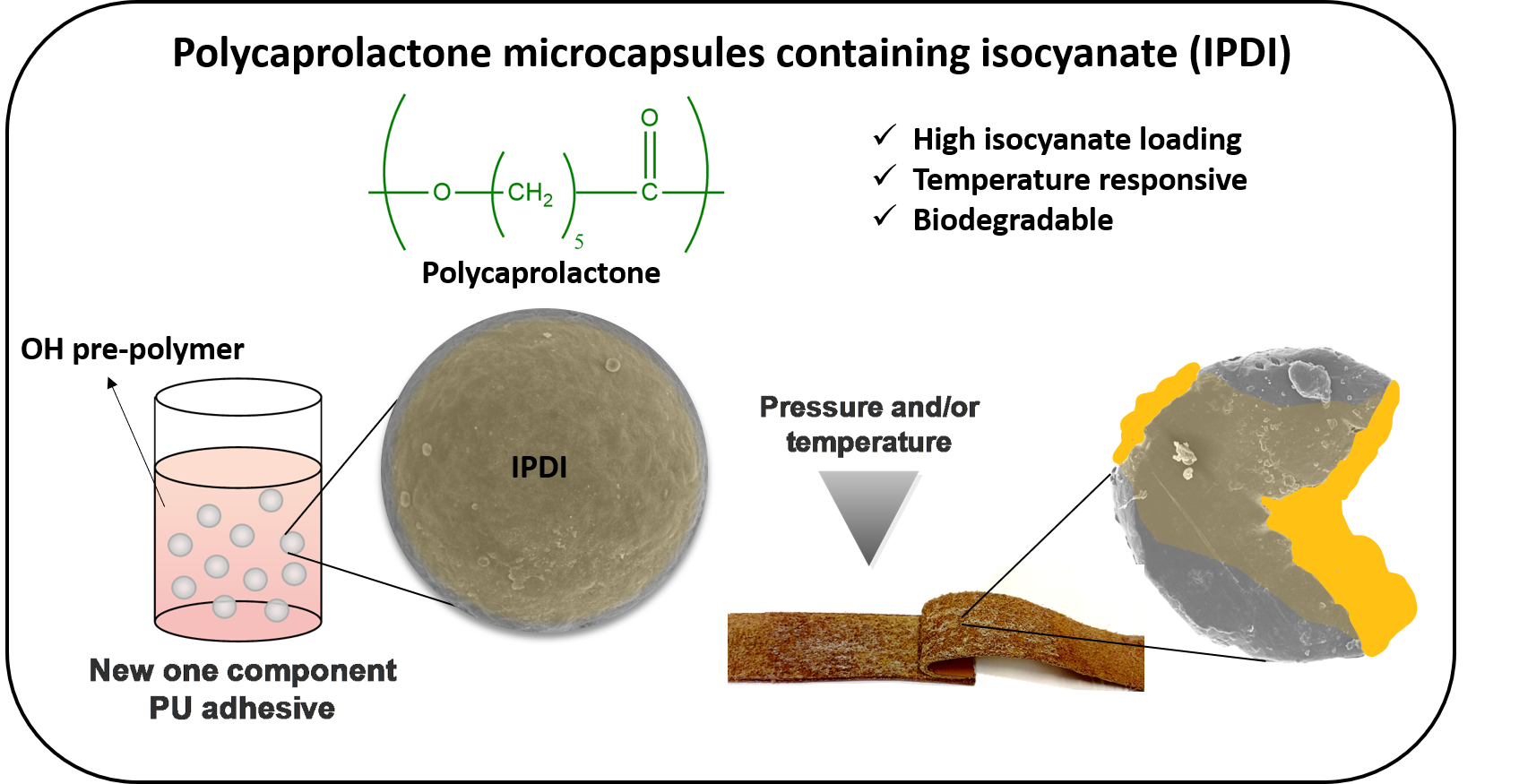The paper 'Microencapsulation of Isocyanate in Biodegradable Poly(ε-caprolactone) Capsules and Application in Monocomponent Green Adhesives' by Mónica V. Loureiro, Mário Vale, Rui Galhano, S. Matos, João C. Bordado, Isabel Pinho and Ana C. Marques was published at ACS Applied Polymer Materials.
We report on the encapsulation of high loadings of liquid isophorone diisocyanate (IPDI) in biodegradable, temperature responsive poly(ε-caprolactone) (PCL) microcapsules (MCs), aimed to be applied as crosslinking agents for the development of a generation of safer and eco-innovative adhesives, which are one-component and self-reactive. The biodegradable PCL MCs were formed via solvent evaporation method in combination with an oil-in-oil-in-water (O/O/W) double emulsion system. Two PCL grades with different molecular weights (MW) were tested as shell material. The use of PCL with higher MW, for the IPDI encapsulation, resulted in core-shell MCs of diameters ranging from 200 to 700 µm and remarkably high isocyanate loadings, up to 60 wt%. The successful IPDI encapsulation and MCs’ shell composition was revealed by Fourier transformed infrared spectroscopy (FTIR) in combination with thermogravimetric analysis (TGA) and gel permeation chromatography (GPC), while the MCs’ morphology and size distribution were assessed by scanning electron microscopy (SEM) and optical microscopy. Differential scanning calorimetry (DSC) in combination with adhesion proof-of-concept studies showed that the newly developed PCL MCs were able to respond to the external stimuli of temperature and pressure, typically employed during the adhesive application, revealing an effective IPDI release in the adhesive joint. The obtained results confirm the viability for the sustainable engineered MCs to be used as crosslinking agents and, therefore, enablers of eco-innovative high performing adhesives. Finally, it should be stressed that the obtained MCs are potentially useful to provide self-healing capability to materials, and that the developed technology may be used in the encapsulation of a variety of other reactive species by means of a purely physical process, using biodegradable polymers.
Mónica V. Loureiro, Mário Vale, Rui Galhano, S. Matos, João C. Bordado, Isabel Pinho, Ana C. Marques, “Microencapsulation of Isocyanate in Biodegradable Poly(ε-caprolactone) Capsules and Application in Monocomponent Green Adhesives”. ACS Applied Polymer Materials, 2 (11) (2020) 4425–4438; DOI: https://doi.org/10.1021/acsapm.0c00535

